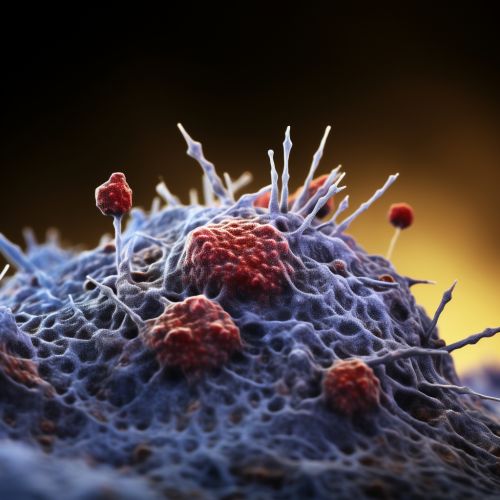Macrophage
Overview
A macrophage is a type of white blood cell that is part of the immune system. These cells are produced by the differentiation of monocytes in tissues. Macrophages function in both non-specific defense (innate immunity) and help initiate specific defense mechanisms (adaptive immunity) of vertebrate animals. Their role is to phagocytose (engulf and then digest) cellular debris and pathogens, and to stimulate lymphocytes and other immune cells to respond to pathogens.


Function
Macrophages are versatile cells that perform many roles. As scavengers, they rid the body of worn-out cells and other debris. Along with dendritic cells, they are foremost among the cells that present antigens, a crucial role in initiating an immune response. As secretory cells, monocytes and macrophages are vital to the regulation of immune responses and the development of inflammation; they produce a wide array of powerful chemical substances (monokines) including enzymes, complement proteins, and regulatory factors such as interleukin 1.
Development
Macrophages that reside in adult healthy tissues either derive from circulating monocytes or are established before birth and then maintained during adult life independently of monocytes. By contrast, most of the macrophages that accumulate at diseased sites typically derive from circulating monocytes. Whether a macrophage has been resident in the tissue or has arrived from the blood stream, the cell can replicate to give rise to a population of cells at the site of activity.
Types
There are several different forms of macrophages, including:
- Alveolar macrophages – located in the pulmonary alveoli of the lungs
- Kupffer cells – located in the liver sinusoids
- Microglial cells – located in the central nervous system
- Osteoclasts – located in bone tissue
- Histocytes – located in connective tissue
Role in Disease
Macrophages play a key role in many diseases, including cancer, atherosclerosis, and rheumatoid arthritis. They can also be hijacked by pathogens and used to spread infection. Understanding the many roles of macrophages in health and disease is an active area of research.
